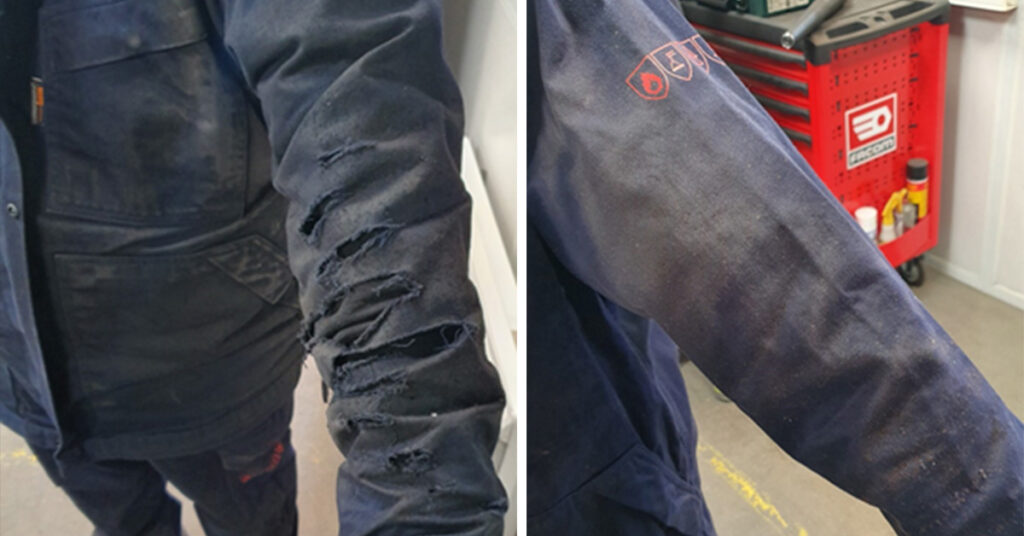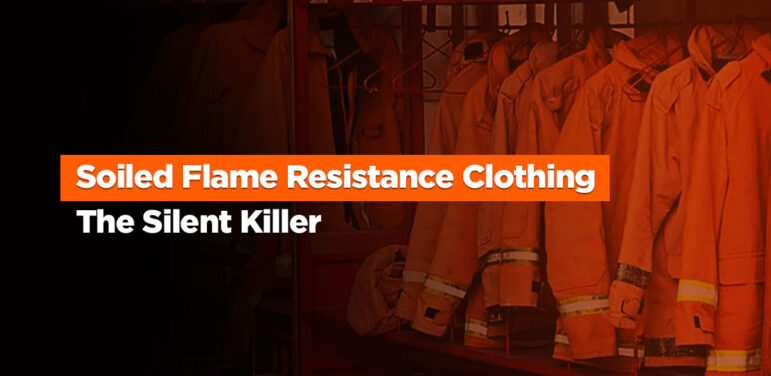Care and maintenance of the Flame resistance clothing is very important to ensure that the clothing provides its intended protection. In our blog on “Importance of Wash care instructions for Flame Resistant Clothing” we had highlighted the importance of understanding the wash care instructions on your FRC. We encourage you to read through the same once again as this would help ensure better protection against the expected industrial risks and also ensure higher durability and longevity of the garment life span.
It is important for all stakeholders to understand that taking care of their FRC is much more important than deciding & buying the correct garments for the applications needed in a particular industry. Wrong care of FRC can put the wearer in deep trouble, even at times leading to loss of life.
This blog is an effort to reiterate the importance of user awareness about their work environment, activities, and the condition of their FRC.
The real motivation behind this information bulletin was an output of a customer complaint analysis done by our Customer Complaint Response (CCR) team very recently, which we are sharing below for the benefit for all.
One of our end customers, working in a workshop, where welding was a major activity, had complained that his FRC developed holes while usage. At one instance the FRC also caught fire just from sparks of a grinding wheel. Instead of self-extinguishing the FRC unfortunately kept burning for few seconds causing panic. Though no damage occurred to the wearer of the garment.
Original pictures of the garments received back from the customer with the compliant:

This was a matter of great concern for our team, since we as responsible producers of FRC give a lot of emphasis on the product quality and its suitability for the applications for which the same is certified. Our CCR team sprang into action and started performing various customized tests on the fabric from the same lot as supplied, to recreate the accident in-house. But to our surprise no hole was created in the fabric, let alone the flame from grinding and welding operation performed in a metal workshop. It was a sign of relief but also a point to ponder on, what might have gone wrong at the customer’s site leading to such an incident.
On further analysis on the FRC specimen received from the customer the soiling present on the garment caught our attention. This soiling was due to the use of chemicals, oil or highly flammable lubricants, which had got deposited on the FRC. It appeared as if the FRC had not been washed for a long time and was in service in spite of the condition it was in. Overhead welding activities was also commonly being performed by the customer at their workshop, without any additional protection or covering the FRC, thus causing small holes at multiple areas.
We realized that the end customer was either not well informed of the care instructions of the FRC or had not taken the instructions seriously, thereby reaching a stage which could have led to a major disaster. During the interaction with the customer, we came to know about their perception that an FR garment will not burn come what may, and so they didn’t have to worry about the work environment, activities they perform and the condition of their FRC.
On performing the flame test on the complaint garment, we noticed advancing flames with sparkles at areas which were badly soiled. The complete fabric was subsequently engulfed and consumed by the flame and we had to shut down the burning forcibly at our end. In areas where the soiling was relatively less, we observed sparkling flames and significant after-flame. This led to a conclusion that the FRC was badly soiled with flammable liquid causing the sparkling and the flames.
The hole present on the shoulder and arm area also suggested overhead welding operation not done as per guidelines in the User Information Sheet (UIS) issued along with the garment.
Let’s therefore, look at the important guidelines that we wish to highlight through this analysis, which could be the difference between life and death.
1) Do not wear soiled FR Clothing while working in an industrial environment:
The instruction is very clear, but what to do in a real world when the clothing gets soiled while working ?
The answer is very simple – The FR properties of the clothing comes from the fiber and the finish used. The FR property only holds good on a clean FRC. Once the clothing is soiled with a compound which promotes flaming, flame resistant fabric becomes helpless. It might to an extent slow down the flame propagation but may not be able to suppress it completely, thus not serving the desired use. So, if your clothing gets soiled during work with a compound which promotes flame – like oil, lubricants, chemicals etc, we insist to immediately move to a safe environment and proceed to either wash the FRC as per instructions and then get the same checked for its efficacy else replace the clothing with a clean one.
2) While doing overhead welding use additional protection like FR blanket on the top of the FRC:
While performing overhead welding a hot metal particle may fall and stick to your clothing item. As it continuously remains in contact of the FRC it might damage the clothing on that spot thus weakening the material which will subsequently break open during washing or industrial activities thus creating holes. An additional protection in the form of FR blanket is recommended, over and above the FRC, while doing overhead welding applications for better protection.
Tarasafe garments accompany an elaborate User Information Sheet (UIS) which we strongly recommend reading thoroughly and understanding for your own safety and well-being. In case you need a copy of the UIS which you might have ignored at the time of purchase of your FRC kindly feel free to connect with our marketing team and we would be happy to service you.


Leave a Reply